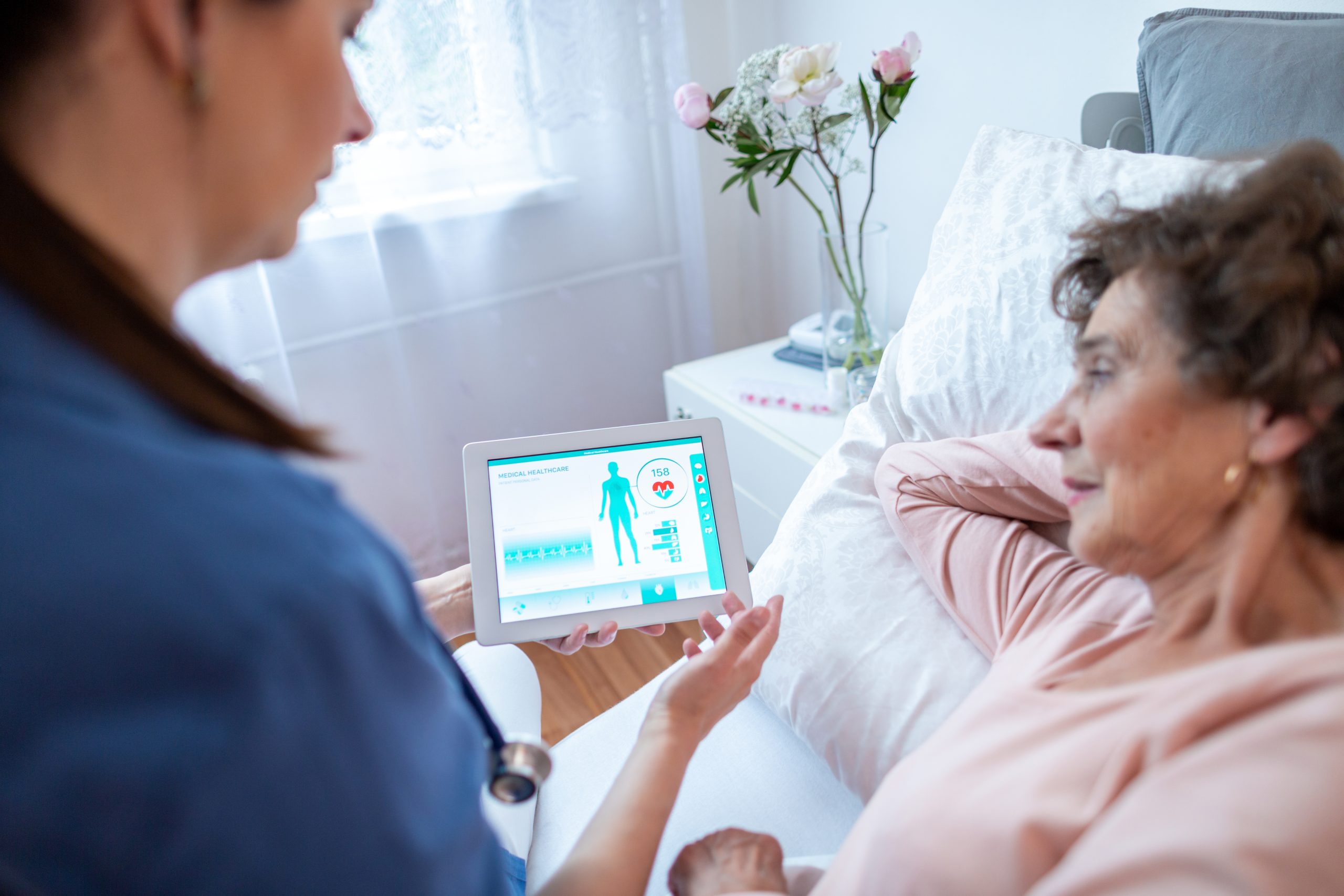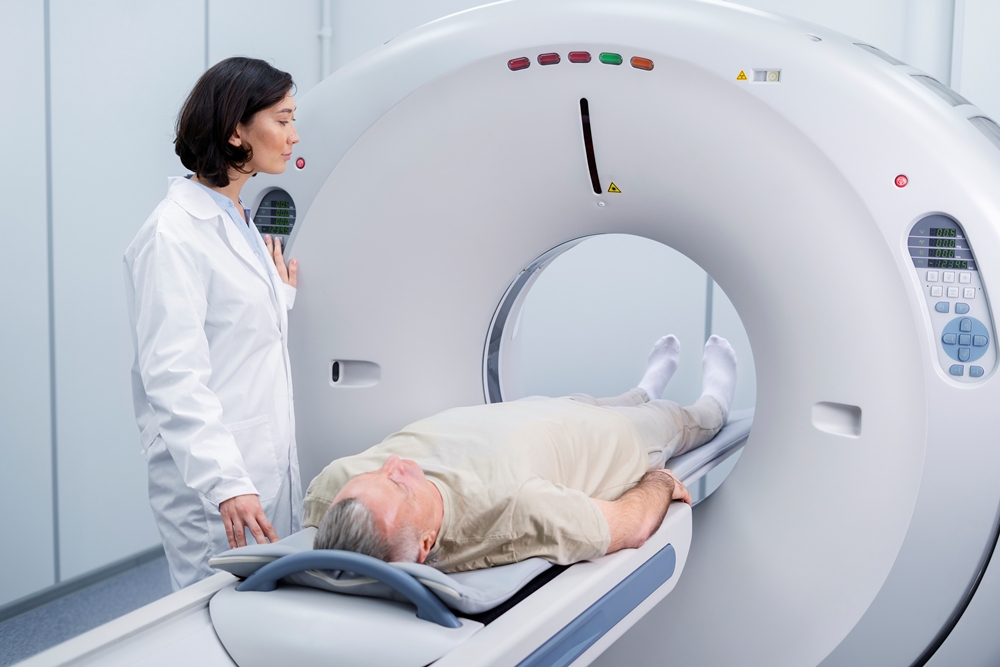Technology
Cera delivers one patient home visit every second as it reaches $500 million in annualised revenues

Technology‑enabled home healthcare pioneer celebrates ongoing expansion – easing NHS pressures and advancing preventative care across the UK
MONDAY 12 MAY 2025, LONDON, UK: Cera, the UK’s leading digital-first home healthcare provider, today announces new milestones in its rapid expansion, as it continues its journey to transform healthcare through technology.
Cera, which launched in 2016, has now reached annualised revenues of c. $500 million, up from $5 million annualised revenues at the start of 2020 – with this rapid growth fuelled by growing demand for its more sustainable, preventative model of care.
Cera is also now delivering around 2.5 million patient home visits every month – equating to an average of one visit every second.

Dr Ben Maruthappu, Founder and CEO of Cera, said: “Every visit we deliver marks a unique moment of care, compassion and connection with older and vulnerable people across the UK and beyond.
“As we continue to roll out our preventative AI tools, each of these visits also marks another step towards a more sustainable future for healthcare – easing NHS pressures, and improving patient health outcomes.
“Knowing our carers are making a new visit on average every second is a great reminder that we are making a continuous, meaningful difference in people’s lives, at scale.”
Cera empowers its workforce of more than 10,000 carers and nurses with proprietary predictive AI tools, including a Falls Prevention AI and a Hospitalisation Predict-Prevent tool, supporting them to keep patients out of hospital and safe and well at home.
These technologies forecast health risks such as falls and infections seven days in advance – allowing Cera to take preventative action which reduces patient falls by 20% and hospitalisations by up to 70%. Analyses show Cera saves the NHS and Government £1 million a day.
The company now has almost 150 regulated sites across the UK, spanning over 150 UK Local Governments and two-thirds of NHS Integrated Care Systems. Cera also has a presence in Germany.
Over the coming years, Cera plans to continue to scale its technology-enabled model of care, as well as expanding into new service lines in the home – aiming to meet even more of a patient’s healthcare needs from the comfort of their own home, from physiotherapy, nursing and doctors’ visits, to specialist, complex or palliative care.
Dr Maruthappu said: “When we launched Cera in 2016, we set out with an ambition to make a meaningful, long-term difference to the future of care, in the UK and beyond.
“Milestones like these mark our progress towards that goal, thanks to the ongoing hard work, creativity and dedication of our teams, the support of our partners, and the faith of the patients and family members who entrust us with their care. We’re grateful to everyone who’s played a part in our journey so far, and we’re excited to see what’s next.”
News
FDA greenlights simple Alzheimer’s test

The US Food and Drug Administration (FDA) has approved a second blood test to detect Alzheimer’s disease, potentially speeding diagnosis for millions of patients.
The Elecsys pTau181 test measures protein levels in blood plasma that act as biomarkers for the degenerative brain disorder, offering a simpler alternative to costly brain scans for people aged 55 and over with symptoms of cognitive decline.
The approval marks another step toward making Alzheimer’s detection more accessible through routine blood testing rather than specialist imaging that can take weeks or months for diagnosis.
Developed by Swiss biotech company Roche with Eli Lilly, the test builds on evidence that certain blood proteins can indicate brain changes linked to Alzheimer’s disease.
The pTau181 protein it measures is a biomarker — a biological indicator of disease activity.
“By bringing Alzheimer’s blood-based biomarker testing into primary care, we can help patients and their clinicians get answers sooner to support them earlier in their journeys,” said Brad Moore, CEO and president of Roche Diagnostics North America.
The FDA approved the first Alzheimer’s blood test, Lumipulse, earlier this year.
That test, made by Japanese company Fujirebio, detects different protein biomarkers linked to the disease.
Alzheimer’s is currently diagnosed using brain scans that detect toxic protein build-up and other hallmarks of the disease. These procedures are expensive, often involve long waiting times, and are not widely available.
Blood tests could make early screening easier in primary care, though experts stress they cannot provide a definitive diagnosis on their own.
“This is another important step toward expanding access to Alzheimer’s disease diagnostic tools,” said Dr Joanne Pike, president and CEO of the Alzheimer’s Association.
“At the same time, it is important to understand this test is designed to rule out the presence of amyloid plaques. It is not a test that will give an Alzheimer’s disease diagnosis, nor is it a standalone tool for detection.”
Amyloid plaques are abnormal protein deposits that form between brain cells and are a hallmark of Alzheimer’s.
The blood test helps determine whether these plaques are likely present, guiding doctors on whether further testing is needed.
Roche said a clinical study involving more than 300 participants showed the test correctly identified people without Alzheimer’s signs in nearly 98 per cent of cases.
his accuracy could help reduce unnecessary brain scans and related costs.
Researchers at UC San Diego recently reported that rises in blood proteins following brain inflammation and nerve cell damage were linked to cognitive decline — evidence supporting development of blood-based early detection tools.
Dr Richard Isaacson, who established one of the first Alzheimer’s prevention clinics in the US, told CNN that additional blood tests would likely be needed to give a full picture of brain health.
“This single Roche test is looking at pTau181 as a single protein marker,” he said.
“But for people who are at risk for Alzheimer’s, to truly have the best accuracy and the most granularity to understand what’s going on, we’re going to need a panel of tests.
“And then we’re going to need to follow these tests over time.”
The Alzheimer’s Association said the test could help avoid unnecessary and expensive diagnostic procedures.
The Elecsys pTau181 test is designed to be used alongside clinical evaluation and other diagnostic tools, not as a replacement for full medical assessment.
Patients with positive results would typically undergo additional testing to confirm a diagnosis.
Both approved blood tests represent progress in improving Alzheimer’s detection, though experts emphasise that diagnosis still requires a combination of clinical, imaging and laboratory assessments.
As blood-based biomarker research advances, scientists hope combining several markers will give a clearer picture of brain health and disease progression — potentially allowing earlier intervention and better patient outcomes.
News
New drug enhances GLP-1 weight loss without extra added effects, trial finds

Nimacimab significantly enhanced weight loss when combined with GLP-1 therapy without adding side effects, according to mid-stage clinical trial results involving 136 adults.
The experimental drug targets the body’s endocannabinoid system differently from existing weight-loss medications, offering a potential new approach to treating obesity when used alongside drugs such as semaglutide.
Participants given both drugs lost an average of 13.2 per cent of their body weight over 26 weeks, compared with 10.25 per cent for those on semaglutide alone — a statistically significant difference of nearly 3 per cent.
Skye Bioscience’s CBeyond study tested the first-in-class monoclonal antibody, which blocks CB1 receptors involved in appetite regulation and fat storage. The CB1 receptor is part of the endocannabinoid system, which helps control hunger, metabolism and fat accumulation. When these receptors become overactive, they can promote weight gain.
“This is the first clinical study to show that the combination of a CB1 inhibitor and a GLP-1 therapeutic can drive clinically meaningful additional weight loss beyond a GLP-1 drug alone,” said Louis Aronne, past president of The Obesity Society and clinical adviser to Skye Bioscience, the drug’s developers.
“Equally important, although the sample size is small, nimacimab achieved this without neuropsychiatric or additive gastrointestinal adverse events. I believe these results warrant further evaluation of the therapeutic potential of this novel CB1 inhibitor.”
Previous CB1-blocking drugs were abandoned because of psychiatric side effects such as anxiety and depression. Nimacimab has been engineered to stay outside the brain, potentially avoiding the problems that affected earlier drugs targeting this pathway.
In the 26-week trial, adults with overweight or obesity were randomly assigned weekly injections of nimacimab, semaglutide (the active ingredient in Wegovy), both drugs together, or placebo.
When used alone, nimacimab produced modest results — participants lost 1.5 per cent of their body weight compared with 0.26 per cent for placebo, a difference that was not statistically significant. Researchers said exposure to the 200 mg dose was lower than expected, suggesting higher doses may prove more effective.
“The 200 mg monotherapy arm provided important pharmacokinetic insight, showing that lower-than-expected drug exposure may have limited the observed effect and informing the dose-ranging strategy we are developing,” said Puneet Arora, the company’s chief medical officer.
Pharmacokinetic data describe how the body absorbs, distributes, metabolises and eliminates a drug, helping determine optimal dosing.
“At the same time, the combination of nimacimab with semaglutide produced a clinically meaningful additional weight loss that exceeded semaglutide alone, with a favourable tolerability profile even in patients who achieved the highest exposure levels.”
The most striking results came from the combination therapy. All participants receiving both drugs lost more than 5 per cent of their body weight, compared with 85 per cent of those on semaglutide alone. Two-thirds of the combination group lost more than 10 per cent, versus 50 per cent with semaglutide alone.
Importantly, the combination produced a healthier lean-to-fat mass ratio, indicating weight loss came primarily from fat reduction rather than muscle loss — addressing a concern that some GLP-1 drugs may cause skeletal muscle wastage.
Weight loss was still ongoing at the end of the 26-week study, suggesting further reductions could occur with longer treatment.
Safety findings were encouraging across all treatment groups. No neuropsychiatric side effects — such as anxiety, depression or insomnia — were reported with nimacimab, either alone or combined with semaglutide.
Gastrointestinal side effects, a leading cause of discontinuation with GLP-1 therapies, did not increase when nimacimab was added to semaglutide. These typically include nausea, vomiting, diarrhoea and constipation.
The overall discontinuation rate was 27 per cent, with only 3.7 per cent of participants dropping out due to adverse events — most of them in the placebo group.
“Gastrointestinal side effects remain a leading cause of discontinuation with obesity therapies,” said Sean Wharton, director of the Wharton Medical Clinic and a clinical adviser to Skye Bioscience.
“It was notable that nimacimab did not increase GI adverse events while adding clinically meaningful weight loss in combination with semaglutide. In my view, a next study with higher nimacimab dosing is the logical step to fully define its role in clinical practice.”
“With our preclinical data, toxicology safety margin, and PK modelling, we believe we have a path to support higher dosing, and we are evaluating the next stage of development to optimise dosing in potential future clinical trials,” Arora said.
Participants from the Phase 2a study are continuing in a 26-week extension trial, with results expected in early 2026. This will provide data on the longer-term efficacy and safety of the combination approach.
GLP-1 drugs such as semaglutide mimic a hormone that regulates appetite and blood sugar. While highly effective for weight loss, some studies have raised concerns about side effects including kidney injury, skeletal muscle loss and gastrointestinal issues.
A combination therapy that enhances weight loss without compounding side effects could address a major unmet need in obesity treatment, where many patients struggle with the tolerability of current medications.
News
Dementia scan could boost UK diagnosis rates

Ultra-fast MRI scans taking under seven minutes could double NHS dementia testing capacity and help boost diagnosis rates across the UK, experts have said.
Scientists have developed a way to cut MRI scan times from 20–30 minutes to less than seven minutes, tackling a key bottleneck in dementia diagnosis, where one in three people never receive one at all.
The technique uses advanced physics to gather more information simultaneously during the scan, reducing total time by almost two thirds. When set-up times are included, the method could at least double capacity across NHS hospitals.
The research was developed by UCL’s Functional Imaging Laboratory and part-funded by Alzheimer’s Society.
Professor Nick Fox, a neurology expert who led the team, said the approach could transform access to vital diagnostic tools.
“This is really exciting. It means that we can make MRI scans — that people deserve to have — much, much more available,” he said.
“One in three people don’t get a dementia diagnosis at all, we estimate. And for those people who do, there are long delays and the recommendation that everybody should have a scan doesn’t happen.
“This could at the very least double the number of MRI scans we can do. There’s no reason why this approach can’t be used across nearly all scanners across hospitals in the UK.”
Current guidelines recommend brain imaging to rule out other causes of cognitive decline or identify the specific type of dementia.
Many patients, however, never receive a scan, and those who do are often given computerised tomography (CT) scans, which provide less detailed images than MRI.
Magnetic resonance imaging (MRI) uses a strong magnet to align protons in the body before knocking them out of position with radio waves.
As the protons return to alignment, sensors detect the released energy to map tissue types and create detailed brain images.
Lying still in the scanner can be particularly difficult for patients with memory problems or claustrophobia. Any movement can blur images, sometimes making them unusable and requiring a repeat scan.
The team tested the faster method on 92 volunteers.
Three neuroradiologists reviewed anonymised scans without knowing which were fast or standard and found the shorter scans were equally reliable for diagnosis.
“What we found was that, when we didn’t tell them which scans were fast or standard, experienced neuroradiologists couldn’t tell the difference,” Prof Fox said.
“The diagnostic ability was just as good, and in some cases slightly better because there was less blurring from people moving. It made much more difference which radiologist looked at your scan, or which day of the week it was.”
Latest NHS data for August showed 66 per cent of people living with dementia were thought to have a diagnosis, meaning one third remain undiagnosed.
Prof Fox said the NHS and government should be more ambitious about not only detecting dementia but identifying the specific cause.
“Saying ‘it’s dementia’ is like saying ‘it’s a rash’. If you went to see your GP, you wouldn’t accept them just saying ‘yes, it’s a rash’. You’d want to know if it’s cancer, eczema, something else,” he said.
“Dementia just means brain failure, it’s not working in the way it should anymore. But the underlying cause could be Alzheimer’s disease, strokes, lots of different things.
“We can only make progress if we give people an accurate diagnosis and a much more timely, rapid one.”
Scans are used alongside cognitive tests to identify the type of dementia. A scan might show past strokes or shrinkage in brain areas linked to memory, such as those affected in Alzheimer’s disease.
Labour’s recent 10-Year Health Plan for England said the UK is “far behind other countries in the levels of CT, MRI and positron emission tomography (PET) scanners for its population”.
The UK has 8.6 MRI scanners per million people — the lowest among comparable nations.
The 2023/24 National Audit of Dementia found that 44 per cent of patients attending specialist memory assessment services had a brain scan, with rates varying from 0–90 per cent depending on the service. In 2021, only 31.8 per cent of scans for suspected dementia were MRI.
MRI scanners cost around £1m. Prof Fox said many hospitals could use the faster method and boost capacity with little or no extra cost, although some may need a software update.
The researchers now plan to work with hospitals to trial the technique, which could also be adapted for other types of body imaging.

 News2 months ago
News2 months ago£29.6m UK facility to accelerate therapies for cancer and heart disease

 Wellness3 weeks ago
Wellness3 weeks agoDrinking even small amounts of alcohol may increase dementia risk, study finds

 News1 month ago
News1 month agoNHS drones could deliver defibrillators faster than ambulances

 News2 weeks ago
News2 weeks agoResearchers use prehistoric skeletons to study ageing

 News2 months ago
News2 months agoExperts warn personal alarms may fail in UK network switch

 News1 month ago
News1 month agoJumping could be key to healthy ageing, study finds

 News2 days ago
News2 days agoCholesterol-lowering drugs could reduce dementia risk

 News2 months ago
News2 months agoBusiness roundup: Grant to advance mitochondrial biomarker research
































